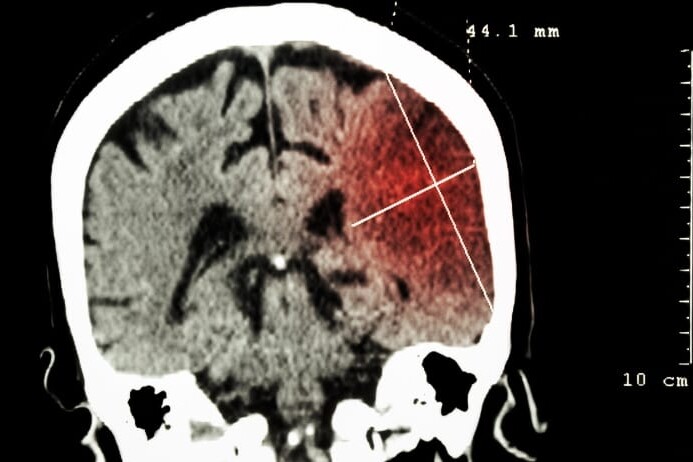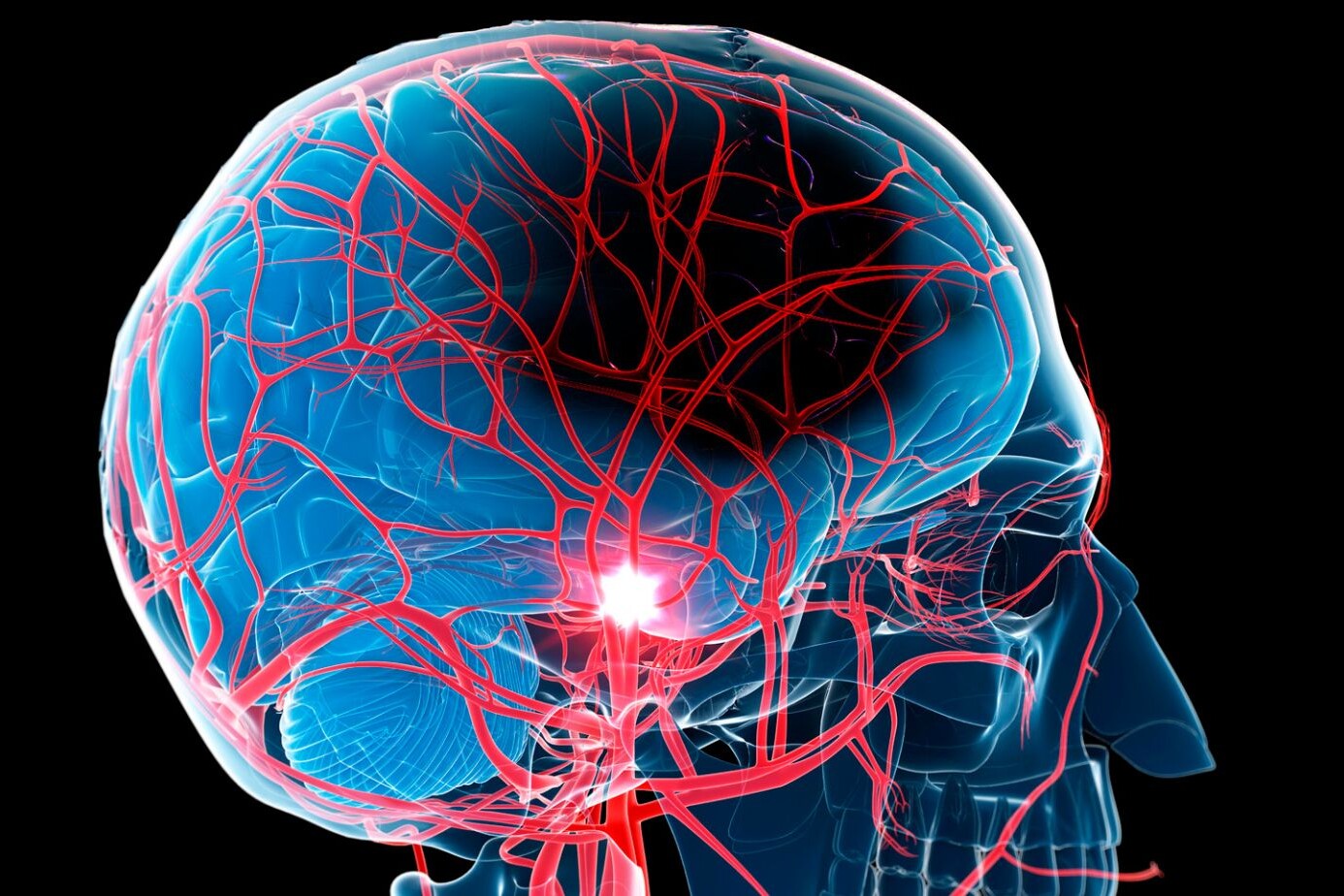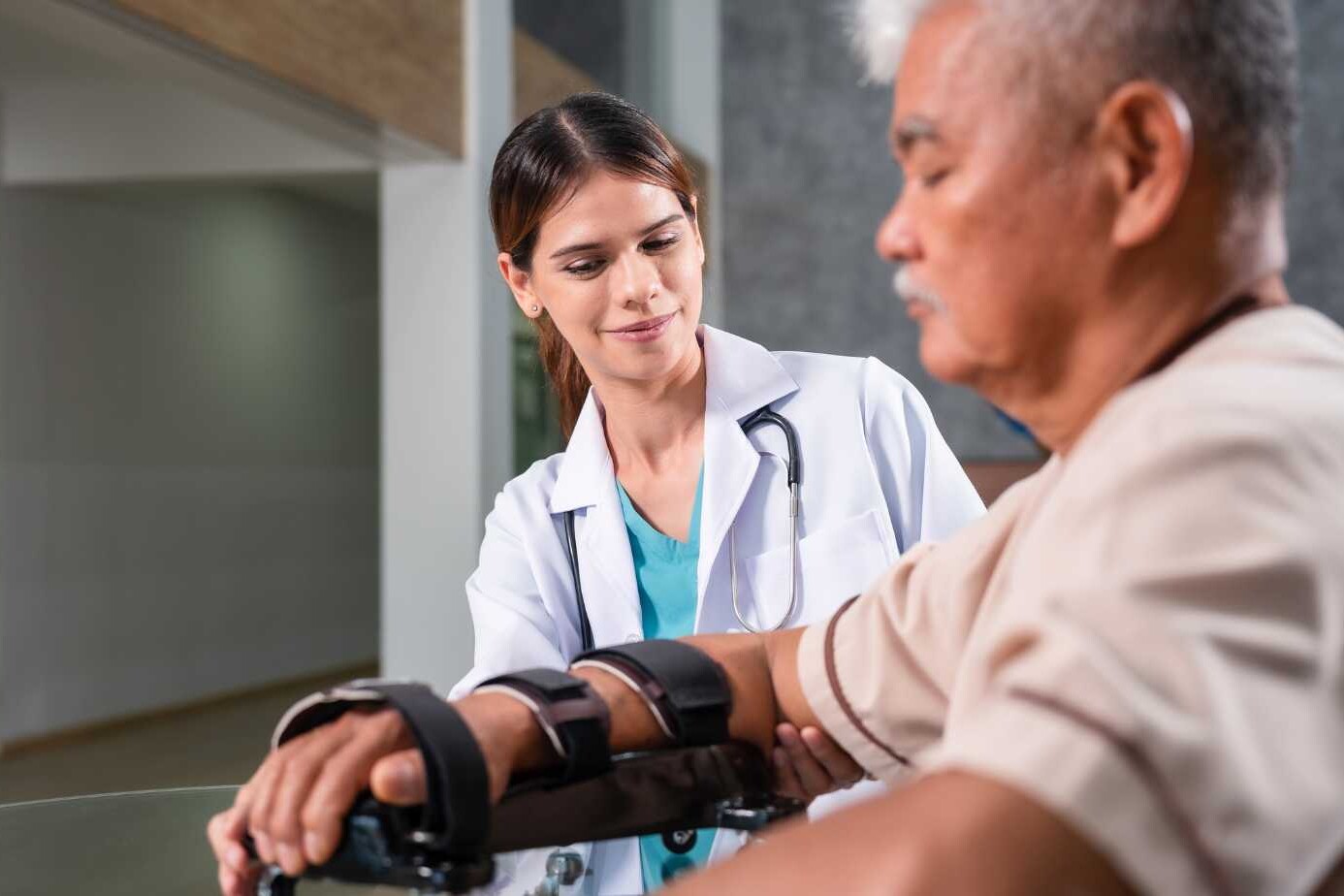Table of Contents
ToggleWhat is a Stroke?
Hi there, Today, we’re going to dive into a topic that might sound a bit serious, but it’s really important to know about – it’s called a stroke.
Sometimes, people also call it a “brain attack.” It’s actually a medical emergency that can cause severe damage and even loss of life.
Imagine your brain as a busy city, with lots of streets and highways. These roads are your blood vessels, and they carry blood, which is like the cars carrying important passengers and supplies to keep the city running. Now, what if one of these roads gets blocked, or if there’s a big leak somewhere? The parts of the city that depend on those roads would have trouble, right? That’s kind of what happens in a stroke.
Our brain is super important. It’s like the boss of our body, telling our arms to move, our mouth to speak, and even helping us remember the names of our friends. For the brain to do all these amazing things, it needs a constant supply of blood. Blood brings oxygen and nutrients to our brain cells, helping them work properly. A stroke happens when a blood vessel in the brain either gets blocked (ischemic)or bursts (hemorrhagic). This means that part of the brain doesn’t get the blood it needs. Without blood, our brain cells can get damaged or die. This is why it’s so important to know about strokes – understanding them can help us take better care of ourselves and others!
Types of Strokes
When we talk about strokes, it’s not just one kind. In fact, there are two main types of strokes, and each one happens in a different way. Let’s explore them.
- Ischemic Stroke: This is the more common type of stroke, happening in about 80% of stroke cases. Imagine your brain’s blood vessels are like a network of pipes. In an ischemic stroke, one of these pipes gets blocked, usually by a blood clot. Blood clots are like thick blobs that can stop the flow in a pipe. When this happens, the part of the brain that the blocked vessel was supposed to supply blood to doesn’t get the oxygen and nutrients it needs. Think of it like a traffic jam on a busy road, where nothing can move forward. This blockage can happen for several reasons, such as fatty deposits building up in the vessels or blood clots traveling from other parts of the body.
- Hemorrhagic Stroke: This type of stroke is less common but can be more serious. It occurs when a blood vessel in the brain actually breaks or leaks. It’s similar to a hose that has burst while watering the garden. When this happens, blood spills into or around the brain, which can damage brain cells. Hemorrhagic strokes can be caused by a number of things, such as high blood pressure (which puts too much pressure on the blood vessel walls), weak spots in the blood vessel walls (like aneurysms), or certain medications that make the blood less likely to clot.
Each type of stroke has different causes and can affect the brain in different ways. But in both cases, the key is that part of the brain is suddenly not getting the blood it needs.
Now, let’s think about risk factors. Some things can increase the chances of having a stroke. These include high blood pressure, smoking, diabetes, being overweight, not exercising, and eating unhealthy foods. Some of these risk factors are within our control – like eating healthy foods and exercising – while others might need a doctor’s help, like controlling high blood pressure.
It’s also interesting to know that strokes can happen to anyone, but they’re more common in older adults. However, by understanding these types and risk factors, people of all ages can take steps to reduce their risk.
Risk Factors for Stroke: Diet and Younger Individuals
Strokes aren’t just something that older people need to worry about. They can happen to anyone, even younger individuals. To understand why let’s dive into the risk factors for stroke, including the role of diet and specific concerns for younger people.
Diet and Stroke Risk
What we eat plays a huge part in our overall health, and that includes our risk for a stroke. Imagine your body as a car. The quality of fuel you put in it determines how well it runs. Similarly, the food we eat can either help or harm our blood vessels and heart.
Fatty and High-Cholesterol Foods
Foods that are high in bad fats (like trans fats and saturated fats) and cholesterol can cause fatty deposits to build up in our blood vessels. This is like having gunk in the pipes, making it harder for blood to flow. Foods like fast food, fried food, and some dairy products can be culprits here.
High Salt Intake
Eating too much salt can lead to high blood pressure, a major risk factor for stroke. High blood pressure is like putting too much air in a balloon – it can cause blood vessels to burst or get blocked.
Sugar and Stroke
Too much sugar, especially from sugary drinks, can lead to obesity and diabetes, which also increase stroke risk.
A Balanced Diet
On the flip side, a diet rich in fruits, vegetables, whole grains, and lean proteins can help keep your blood vessels healthy. These foods are like high-quality fuel, helping everything run smoothly.
Stroke Risk in Younger Individuals
While it’s true that the risk of stroke increases with age, younger people aren’t immune. In fact, there’s been an increase in strokes among younger adults in recent years. Here’s why
Lifestyle Choices
Just like in older adults, unhealthy eating, lack of exercise, smoking, and heavy drinking can increase a young person’s stroke risk.
Medical Conditions
Conditions like high blood pressure, high cholesterol, diabetes, and obesity are becoming more common in younger people, partly due to lifestyle choices. These conditions are big risk factors for stroke.
Stress and Mental Health
Young people today face a lot of stress, which can contribute to high blood pressure and heart disease. Taking care of mental health is just as important as physical health.
Birth Control Pills and Stroke Risk
For young women, certain birth control pills can slightly increase stroke risk, especially if they smoke or have high blood pressure.
Recreational Drug Use
The use of some recreational drugs can increase stroke risk significantly, even in young people
Recognizing the Signs of a Stroke
Knowing the signs of a stroke is super important. The quicker you recognize these signs, the faster you can get help. Most people know the basic signs of a stroke, remembered by the acronym F.A.S.T., but there’s more to it, especially when we talk about a type of stroke called “posterior circulation stroke.”
The Classic Signs: F.A.S.T.
- F (Face): Look at the person’s face. Is one side drooping? Ask them to smile. Does their smile look uneven?
- A (Arms): Ask the person to raise both arms. Does one arm drift downward? Or can they not lift one arm at all?
- S (Speech): Listen to their speech. Is it slurred or strange? Do they have trouble speaking or seem confused?
- T (Time): If you see any of these signs, it’s time to call for help right away. Quick action can make a big difference!
Signs of Posterior Circulation Stroke
A posterior circulation stroke happens in the back part of the brain. This area controls different functions, so the signs can be different. They might be trickier to spot, but just as important
- Balance and Coordination: Is the person suddenly clumsy? Are they having trouble walking, feeling dizzy, or losing their balance?
- Vision Problems: Are they having trouble seeing? This could be double vision, blurred vision, or even losing sight in one eye.
- Headache: A sudden, severe headache can be a sign, especially if it’s not normal for them.
- Confusion: Is the person suddenly confused, not understanding what’s happening, or having trouble understanding others?
- Nausea or Vomiting: These aren’t just signs of a stomach bug. In combination with other signs, they can indicate a stroke.
Why It’s Crucial to Know These Signs?
Strokes can be sneaky, and every minute counts. The sooner a person gets help, the better their chances of a good recovery. This is because, during a stroke, brain cells start to die, and the longer the brain is without proper blood flow, the more damage can happen.
It’s especially important for kids to know these signs as they could be at home with a grandparent, or maybe at a relative’s house. If they are aware they may be able to help the elderly
What Happens During a Stroke?
Let’s explore what really goes on in our brain during a stroke. Understanding this can help us appreciate why it’s so crucial to recognize the signs and get help quickly.
The Brain: Our Body’s Command Center
First, think of your brain as the boss of your body. It’s like the control room in a spaceship. It sends out orders to different parts of the body to do everything from moving your fingers to blinking your eyes. For the brain to do all these things, it needs energy and oxygen, which it gets from the blood.
When a Stroke Strikes
During a stroke, something happens that stops the blood from getting to a part of the brain. This is like if the power suddenly went out in the spaceship’s control room. Without blood, the brain cells in that area don’t get the oxygen and nutrients they need and start to die. The part of the body that those brain cells control can’t get the brain’s messages anymore. This is why someone might have trouble speaking or moving one side of their body during a stroke.
Different Strokes Affect Different Parts
Since different parts of the brain control different parts of the body, where the stroke happens affects what symptoms someone might have. For example, if the stroke happens in the part of the brain that controls how we speak, the person might have trouble talking. Or if it’s in the part that controls how we move our legs, the person might suddenly fall or feel weak.
- The Immediate Effects
- Right when a stroke is happening, a person might feel:
- Numbness or weakness, especially on one side of the body.
- Confusion or trouble understanding others.
- Difficulty seeing with one or both eyes.
- Trouble walking, dizziness, or loss of balance.
- Severe headache with no known cause.
Why Speedy Help Matters
The longer the brain goes without blood, the more damage can happen. That’s why it’s so important to get medical help fast. Doctors have ways to help, like medicines that can dissolve clots in ischemic strokes or surgery for hemorrhagic strokes. The quicker someone gets to the hospital, the more doctors can do to help reduce the damage.
Understanding Stroke Treatment
Now, let’s talk about how doctors help when someone has a stroke
- Act Fast: When someone has a stroke, it’s super important to call help right away. Time is very precious because the quicker we help, the better the chances of saving the brain. So, always remember, if you see someone who might be having a stroke, don’t wait – call for help!
- Medicine: One of the first things we do is give the person special medicines that can help break up clot (traffic jam) in the brain’s blood vessels. These medicines can work like magic if given early, and they help the brain get the blood it needs. These are called clot busters (tissue plasminogen activator or TpA)
- Brain Images: Neurologists use special machines like “MRI scanners” to take pictures of the brain. It’s like taking a photo of your brain to see which part needs the most help. These pictures help them decide the best way to tackle the problem.
- Special Surgeries: Sometimes, when the clot or the traffic jam is really bad, Neurologists might need to do a special surgery to help the brain. It’s like fixing a broken bridge on the road. They can remove the blockage or fix the blood vessels to make sure the brain gets enough blood. This is called mechanical thrombectomy.
- Therapy Time: After the stroke, the person might need therapy to help their brain recover. There are special therapists who teach them exercises and activities to get better. It’s like training your brain to work well again, just like you practice riding a bike or playing a game.
- Healthy Habits: Doctors also talk to the person and their family about making healthy choices, like eating good foods and not smoking, to keep the brain and body healthy.
Now, here’s the most important part: some people can recover really well after a stroke, while others may need more time and help. But with the right care and support, the brain can get better and start working like it used to!
Stroke FAQs
Are strokes painful?
Strokes themselves are not typically painful. However, some stroke survivors may experience headaches, which can be painful, as a result of the stroke.
Are stroke survivors at higher risk for COVID?
Stroke survivors, especially those with certain risk factors or comorbidities, may have an increased risk of severe illness if they contract COVID-19. It is essential for them to follow COVID-19 guidelines and consult with their healthcare providers.
Are strokes fatal?
Strokes can be fatal if not treated promptly. The severity and outcome of a stroke depend on factors such as the type of stroke, its location, and the timeliness of medical intervention.
Are stroke and heart attack the same?
No, stroke and heart attack are not the same. A stroke occurs when blood flow to the brain is interrupted, leading to brain damage. A heart attack, on the other hand, occurs when blood flow to the heart muscle is blocked, which can cause damage to the heart.
Are strokes genetic, environmental, or hereditary?
Stroke risk factors can be a combination of genetic and environmental factors. Some individuals may have a genetic predisposition to stroke, but lifestyle factors like diet, smoking, and physical activity also play a significant role in stroke risk.
Can stroke be prevented?
Yes, stroke can often be prevented or the risk reduced through lifestyle changes such as maintaining a healthy diet, exercising regularly, not smoking, managing blood pressure, and controlling diabetes.
Can stroke cause paralysis?
Yes, strokes can cause paralysis, depending on the area of the brain affected. It can lead to weakness or loss of function in specific parts of the body.
Can stroke victims hear you?
Whether stroke patients can hear and understand depends on the severity and location of the stroke. Some may retain their ability to hear and understand, while others may have communication difficulties.
Can stroke patients take Covid Vaccine?
The safety and suitability of the COVID-19 vaccine for stroke patients, including Covishield or any other vaccine, should be discussed with their healthcare provider. In general, many stroke patients are encouraged to get vaccinated if they are eligible, but individual medical advice may vary.
Can stroke patients recover fully?
Recovery from a stroke varies from person to person and depends on factors like the type of stroke, its severity, and the rehabilitation efforts. Some stroke survivors can achieve significant recovery, while others may have long-term disabilities.
Can stroke cause a heart attack?
Stroke and heart attack are two different medical conditions. However, they share some risk factors, like high blood pressure and atherosclerosis. Having a stroke does not directly cause a heart attack, but both conditions can be related to underlying cardiovascular issues.
How do strokes happen?
Strokes can occur when there is a disruption in blood flow to the brain. This can happen due to a blood clot blocking a blood vessel (ischemic stroke) or a blood vessel rupturing (hemorrhagic stroke).
How do stroke patients die?
Stroke patients can die from various complications related to the stroke, such as brain damage, infections, or organ failure. The specific cause of death varies depending on the individual case.
How do stroke patients recover?
Stroke recovery often involves rehabilitation, which may include physical therapy, occupational therapy, speech therapy, and medications. The goal is to regain lost functions and improve quality of life.
How do strokes cause memory loss?
Strokes can cause memory loss if they affect areas of the brain responsible for memory and cognition. The extent of memory loss can vary depending on the location and severity of the stroke.
How is stroke diagnosed?
Stroke diagnosis typically involves a combination of medical history review, physical examination, imaging tests like CT scans or MRIs, and blood tests to determine the cause and extent of the stroke.
Should stroke victims get vaccinated?
Stroke victims should consult with their healthcare providers about getting vaccinated. In general, vaccination is encouraged for eligible individuals, but medical advice may vary based on individual health conditions.
Should stroke victims drink alcohol?
The consumption of alcohol should be discussed with a healthcare provider, as it can interact with medications and have various health implications. Some stroke survivors may be advised to limit or abstain from alcohol.
Should stroke victims fly?
Flying after a stroke may be possible, but it should be discussed with a healthcare provider. Long flights and changes in altitude can pose risks, so precautions and medical advice should be considered.
Should stroke patients be on blood thinners?
Whether a stroke patient should be on blood thinners depends on the specific circumstances and underlying medical conditions. Blood thinners may be prescribed to prevent blood clots, but the decision should be made by a healthcare provider.
What are stroke symptoms?
Stroke symptoms can include sudden weakness, trouble speaking, confusion, severe headache, and problems with balance or walking. If you notice these signs, call help right away.
Where are strokes most common?
Strokes are common worldwide, but they are more prevalent in older people and in some regions with certain risk factors like high blood pressure and smoking.
Where are stroke headaches located?
The location of a headache during a stroke can vary, but it’s often on one side of the head.
Stroke where speech is affected?
If a stroke affects speech, it might be hard to talk or understand what others are saying.
Stroke where you can’t speak?
Yes, some strokes can make it impossible to speak or understand language.
Stroke where you lose vision?
Strokes can affect vision, causing blind spots or even complete loss of vision in one or both eyes.
Will stroke show up on an MRI?
Yes, an MRI is a test that can often show if someone had a stroke.
Will stroke symptoms go away?
Stroke symptoms should not be ignored; they require immediate medical attention. Some people can recover from stroke symptoms with treatment, but it varies.
Will stroke show up on a CT scan?
Yes, a CT scan is another test that can detect a stroke.
Did I have a stroke?
If you experience sudden, severe symptoms like weakness, trouble speaking, or confusion, it’s important to seek medical help immediately to determine if you had a stroke.
Stroke and heart attack?
Stroke affects the brain, while a heart attack affects the heart. They are different but can share similar risk factors.
Stroke and paralysis?
Strokes can lead to paralysis, meaning you can’t move certain parts of your body.
Stroke and blood pressure?
High blood pressure is a significant risk factor for strokes, so it’s essential to manage it.
Stroke and hemiplegia?
Hemiplegia is a type of paralysis that affects one side of the body and can result from a stroke.
Stroke and cardiac arrest?
Cardiac arrest is when the heart suddenly stops beating. It’s different from a stroke, which affects the brain.
Stroke and diabetes?
Diabetes can increase the risk of stroke, so managing diabetes is essential for stroke prevention.
Stroke compared to heart attack?
A stroke affects the brain, while a heart attack affects the heart. Both are serious medical emergencies but are different conditions.
Stroke compared to aneurysm?
A stroke is a disruption of blood flow to the brain, while an aneurysm is a weakened blood vessel that can burst, leading to bleeding in the brain.
Stroke compared to seizures?
Seizures involve abnormal brain activity and can have various causes, while a stroke is a sudden loss of blood flow to the brain.
Stroke versus Bell’s palsy?
Stroke is a brain issue, whereas Bell’s palsy is a condition that affects the facial muscles. They are not the same.
Stroke versus seizure?
A seizure is an uncontrolled electrical activity in the brain, while a stroke is a problem with blood flow to the brain.
Stroke versus TIA (Transient Ischemic Attack)?
A TIA is often called a “mini-stroke” because it’s a temporary blockage of blood flow to the brain, while a stroke is a more severe and lasting event.
Stroke versus brain bleed?
A stroke can be caused by either a clot blocking blood flow (ischemic stroke) or bleeding in the brain (hemorrhagic stroke).
Stroke versus migraine?
A migraine is a severe headache, while a stroke is a medical emergency that can cause various symptoms, including severe headaches.
Stroke versus heart attack symptoms?
Symptoms of a stroke can include sudden weakness, confusion, trouble speaking, while a heart attack may involve chest pain, shortness of breath, and discomfort in the upper body.
Stroke vs. paralysis?
Stroke can cause paralysis, which means you can’t move parts of your body. It’s a possible outcome of a stroke.
Stroke vs. infarct?
An infarct is a general term for tissue damage due to a lack of blood supply, which can happen in both strokes and heart attacks.
Stroke vs. shock?
Stroke is a medical condition involving the brain, while shock is a severe medical emergency where the body’s vital organs aren’t getting enough blood flow.
Stroke vs. hemorrhage?
Stroke can be caused by bleeding in the brain (hemorrhagic stroke) or a blockage of blood flow (ischemic stroke).
Stroke physiotherapy?
Stroke physiotherapy is a type of therapy to help stroke survivors regain movement and function through exercises and physical therapy.
About The Author

This article is medically reviewed by Dr. Chandril Chugh, Board-Certified Neurologist, providing expert insights and reliable health information.
Dr. Chandril Chugh is a U.S.-trained neurologist with over a decade of experience. Known for his compassionate care, he specializes in treating neurological conditions such as migraines, epilepsy, and Parkinson’s disease. Dr. Chugh is highly regarded for his patient-centered approach and dedication to providing personalized care.
→ Book a consultation to discover which remedies suit your needs best.






